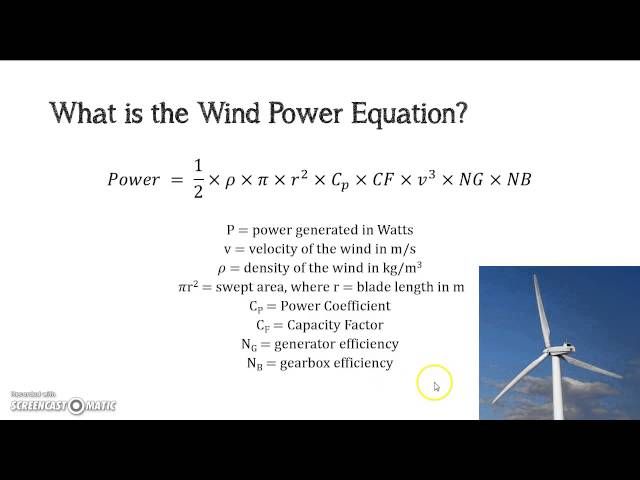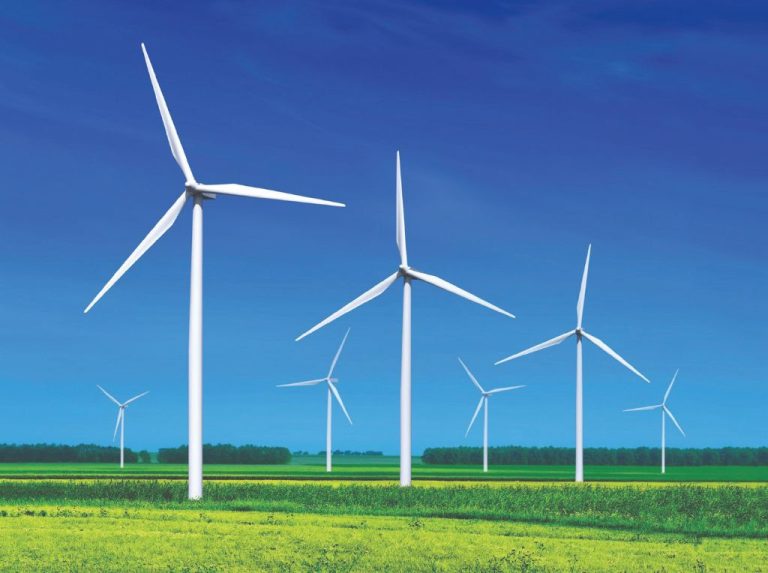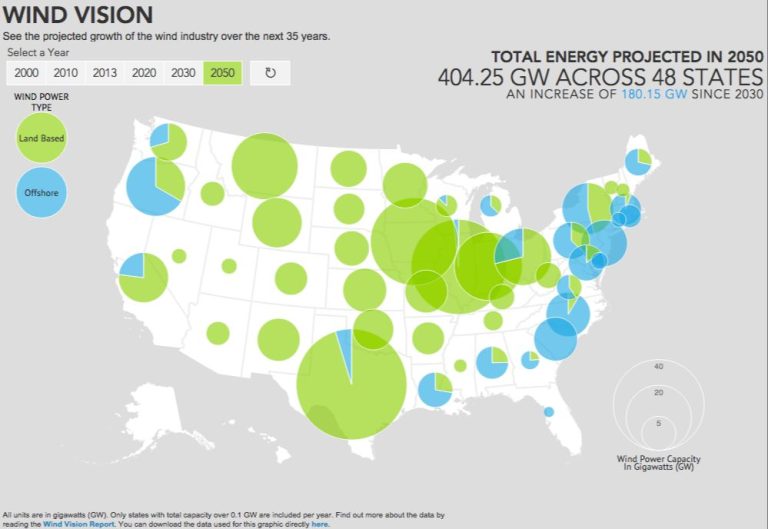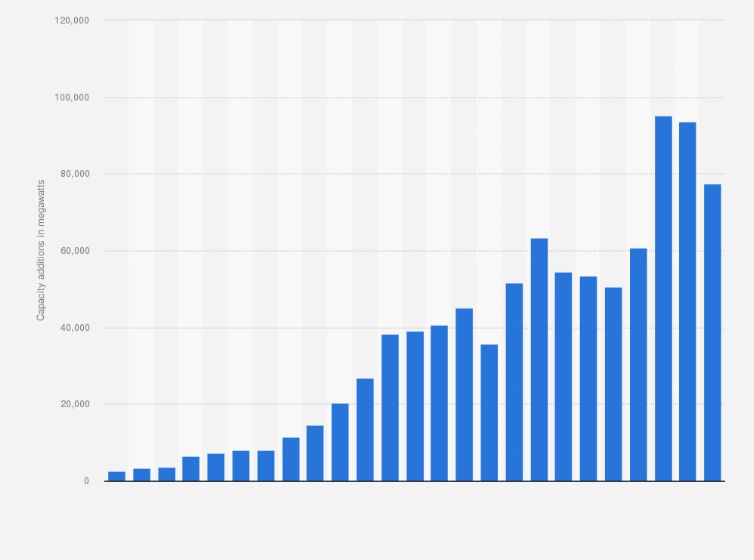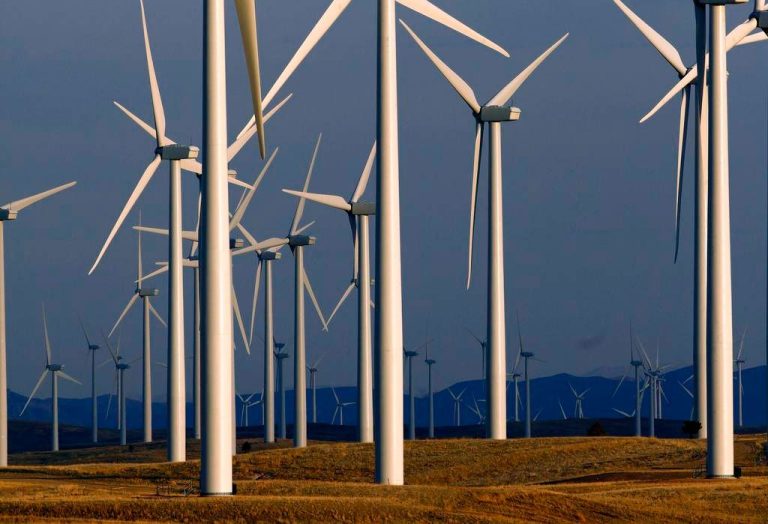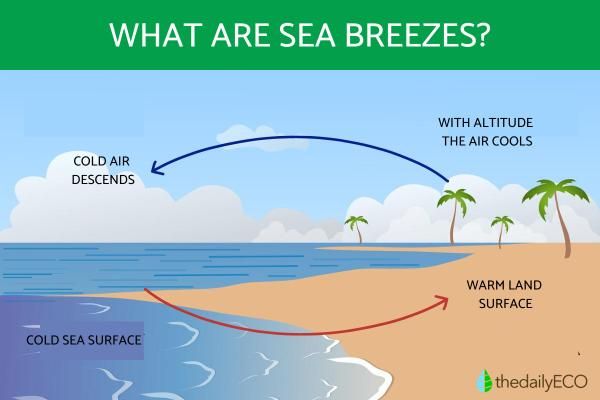Which Is One Advantage Wind Power Has Over Solar Power?
Wind and solar power are two major renewable energy sources gaining popularity around the world. Both harness natural resources – the wind and the sun – to generate electricity without producing greenhouse gas emissions.
Wind power uses wind turbines to convert the kinetic energy of wind into mechanical power, which then spins a generator to produce electricity. Wind power capacity and generation have grown rapidly in recent years as the technology has improved. According to Greening the Grid, wind power is now one of the lowest-priced renewables available.
Solar power harnesses energy from the sun using photovoltaic panels to convert sunlight into electricity. Solar capacity additions have also grown exponentially in the last decade. Solar power offers a clean, renewable source of energy that can provide power for homes, businesses, and utilities.
Both wind and solar energy offer advantages as renewable sources of electricity but also have differences that affect how they are used and integrated into the grid. Looking at factors like intermittency, capacity factor, land use, and more can showcase the strengths and weaknesses of each technology.
Intermittency
Both wind and solar power are considered intermittent energy sources because their output varies based on environmental conditions. The wind doesn’t blow at a constant speed and solar panels only produce energy when the sun is shining (EIA, 2022). This means that wind and solar farms do not generate electricity at a steady rate throughout the day.
The output of a wind farm depends on the wind speed. During periods of high winds, a wind farm will produce maximum power, but when the wind dies down, the power output drops sharply (Jacobson, 2022). Similarly, solar panels produce the most electricity on sunny days, but generate very little on cloudy days or at night when there is no sunlight. This variability can make integrating large amounts of wind and solar energy challenging for grid operators.
While battery storage can help smooth out some of the intermittency, wind and solar will never be perfectly steady sources of electricity generation. Their variability must be balanced out using other flexible sources like hydroelectric dams or natural gas power plants (Energy Education, n.d.). Overall, intermittency remains one of the key technical challenges for expanding renewable energy.
Capacity Factor
The capacity factor is an important consideration when comparing wind and solar power. The capacity factor refers to the average power generated divided by the rated peak power. According to research, wind power typically has a higher capacity factor than solar photovoltaics. The average capacity factor for wind turbines is around 35-45%, compared to 15-25% for solar panels.
This difference occurs because wind speeds are more consistent than solar irradiation, which varies throughout the day and seasons. Solar only generates power when the sun is shining, but wind turbines can operate at all hours as long as wind speeds are sufficient. As a result, wind turbines can generate closer to their full rated power more often.
The higher capacity factor for wind energy means wind farms generally produce more total annual energy per rated megawatt of capacity than solar installations. This can make wind energy more attractive in terms of capacity value and utilization of grid infrastructure. However, solar technology and capacity factors are improving over time.
Land Use
Wind power has an advantage over solar power when it comes to land use requirements. According to a 2013 report from the National Renewable Energy Laboratory, wind power requires far less land area than solar power for the same energy output [1]. This is because wind turbines can be spaced further apart than solar panels, and the land in between turbines can still be used for other purposes like agriculture. In contrast, solar panels take up significant land area that cannot be used for anything else. To generate 1,000 megawatts of electricity, wind power needs about 70,000 acres of land while solar power needs 110,000 acres [1]. So wind power requires over 50% less land area than solar power to produce the same amount of electricity.
Location Constraints
When it comes to location constraints, solar power is more limited than wind power. Solar power relies on consistent direct sunlight, which means it performs best in sunny, cloudless areas like deserts and arid regions. According to studies from Penn State [1], the southwestern United States, such as California, Arizona, New Mexico, and west Texas are prime locations for solar farms. This geographic limitation makes solar power impractical for large swaths of the country.
In contrast, wind power is far less location-constrained. Wind turbines can be placed in many different environments, as long as there is sufficient wind. While the greatest wind resources are in the central plains, wind farms can be found in 39 states across the US [2]. Offshore wind farms are also an option, opening up coastal and lake regions. Ultimately, wind power has many more viable location options compared to solar power.
Cost
When comparing the costs of wind and solar power, most analyses show that wind power is currently the more economical option. According to a working paper from Carnegie Mellon University, the average levelized cost of wind power ranges from $32-51 per MWh, while the average levelized cost of solar PV power ranges from $90-170 per MWh (source). Quora analysis also shows that wind power costs around $70/MWh on average, compared to solar which remains over $100/MWh (source). The cost of solar has dropped substantially in recent years but still remains higher than wind.
There are a few reasons for this cost differential. First, wind turbines and generation equipment tend to be less expensive than the panels, inverters and batteries required for solar installations. Second, wind projects require less land and spacing than solar farms. Finally, wind resources are more widely available and consistent than high insolation solar sites. Overall, these factors make wind the more economic renewable energy source at present.
Energy Storage
One advantage that wind power has over solar power is in how it pairs with energy storage solutions. According to a report by the International Energy Agency, “At higher shares of wind power, storage capacity will also reduce curtailments needed…For solar power storage is an enabler in lower shares than for wind.” STORAGE AND WIND POWER. This is because wind power tends to be more intermittent than solar power. The output from wind farms can vary significantly in short periods of time based on changes in wind speed and direction. Having energy storage paired with wind farms helps smooth out these fluctuations in production. With solar, the changes from hour to hour are not as drastic. In addition, peak solar production aligns well with peak electricity demand during the middle of the day. But wind patterns are not as closely aligned with intraday demand cycles. So having energy storage paired with wind provides more value in filling in supply gaps. Overall, the greater variability and unpredictability of wind power makes it a better pairing for energy storage solutions.

Wildlife Impact
Both wind and solar power can have negative impacts on wildlife if not properly sited and mitigated. However, research suggests wind power’s wildlife impacts may be more significant in some cases. Wind turbines can collide with birds and bats in flight, causing direct mortality. One study estimated wind turbines kill between 140,000 to 328,000 birds annually in the U.S. 1 Bats are also vulnerable to wind turbine collisions and barotrauma from pressure changes near the blades. Estimates indicate wind turbines kill hundreds of thousands of bats each year. 2
In comparison, while solar facilities can potentially disrupt habitats, careful siting and mitigation measures can reduce wildlife impacts. Solar photovoltaic systems have a relatively small footprint and many animals can move around and between panels. However, utility-scale facilities in sensitive habitats may still displace species. Overall, research suggests solar power has lower wildlife mortality rates than wind power in most cases. Proper siting, mitigation strategies, and technology innovations can reduce the wildlife impact for both renewable sources over time.
Aesthetics
The aesthetics, or visual impact, of wind turbines compared to solar panels is an important consideration when choosing between the two renewable energy sources. Some argue that wind turbines are more intrusive on the landscape and natural viewsheds than solar panels (Source). This is because wind turbines are much larger structures, often standing over 300 feet tall with rotor diameters over 400 feet across. Their height and spinning motion makes them highly visible from long distances (Source).
In contrast, solar panels have a relatively low profile, usually only about 3-6 feet off the ground for residential systems. Utility-scale solar farms do take up significant land area, but are not as vertically intrusive on the landscape. Some argue solar panels can more easily blend into the natural environment or be installed on existing rooftops out of primary sight lines (Source).
Overall, wind turbines generally have a greater visual impact than solar panels due to their large size and height. This can make permitting and siting wind projects more challenging in scenic areas or near cities. However, some find the sleek look of modern wind turbines architecturally appealing as symbols of clean energy.
Conclusion
In summary, wind power has several key advantages over solar power:
Wind power can achieve higher capacity factors than solar power. Wind turbines typically operate around 35-45% of the time, while solar panels achieve 15-25%. This means wind power can generate more total electricity over time.
Wind power requires less land area than solar to produce the same amount of electricity. Wind turbines use the space around them efficiently, while solar panels can take up large areas.
Wind power output is more consistent and predictable than solar power. Solar relies on sunny weather, while wind patterns can be forecast more reliably.
The costs of wind power have fallen dramatically in recent years, making it competitive with fossil fuels and solar. New turbine technology is making wind even more affordable.
Overall, wind’s higher capacity, smaller footprint, predictable generation, and falling costs give it an edge over solar in many situations. However, both technologies will play important roles as we transition to clean energy.

